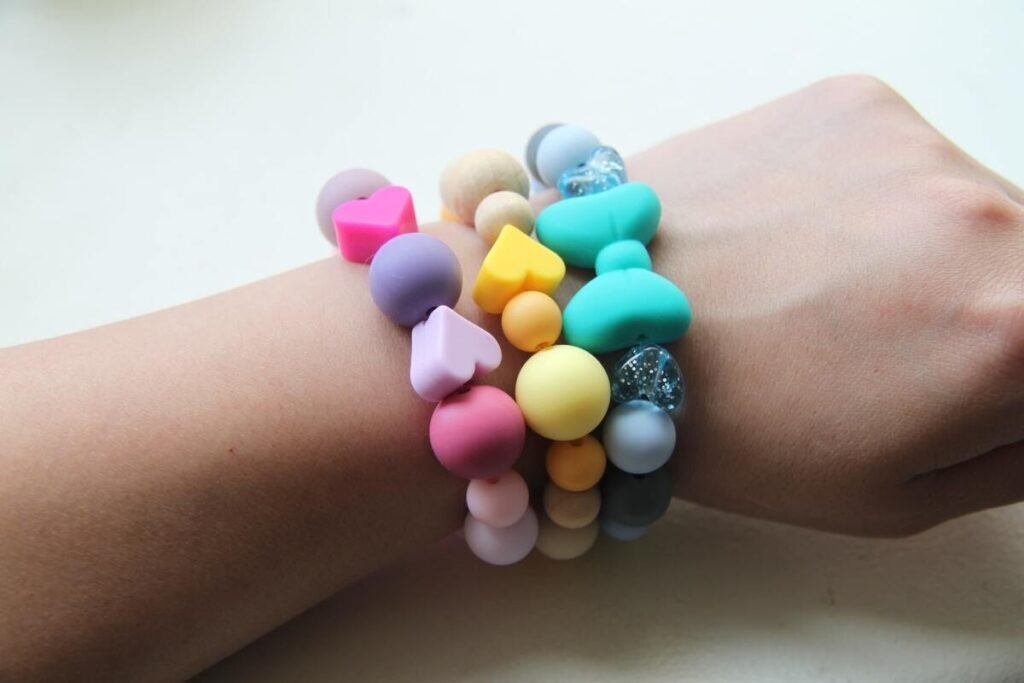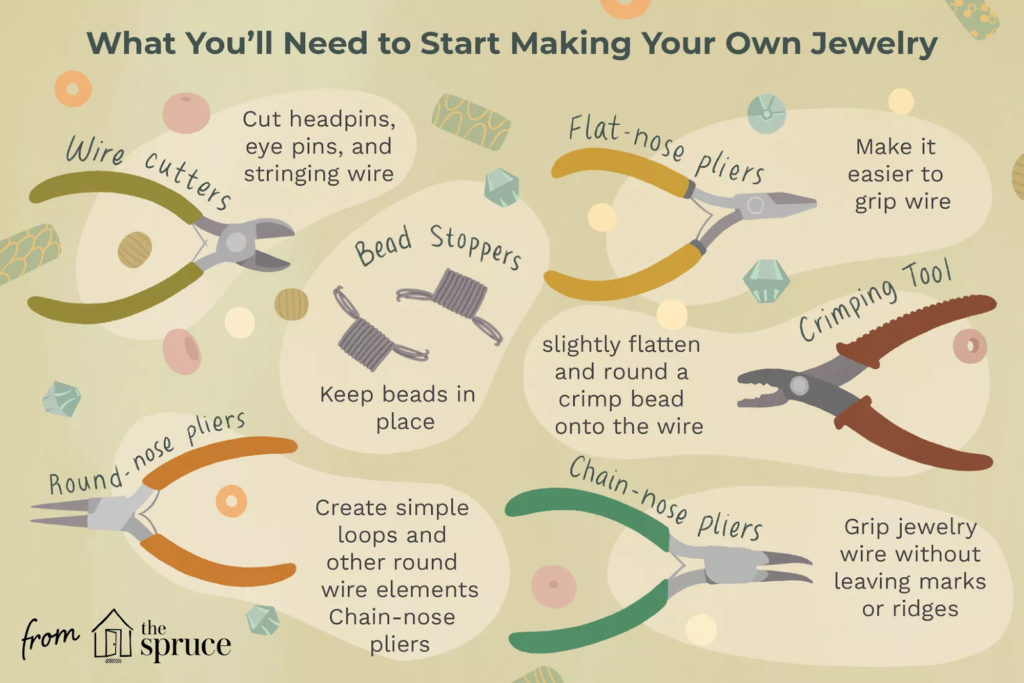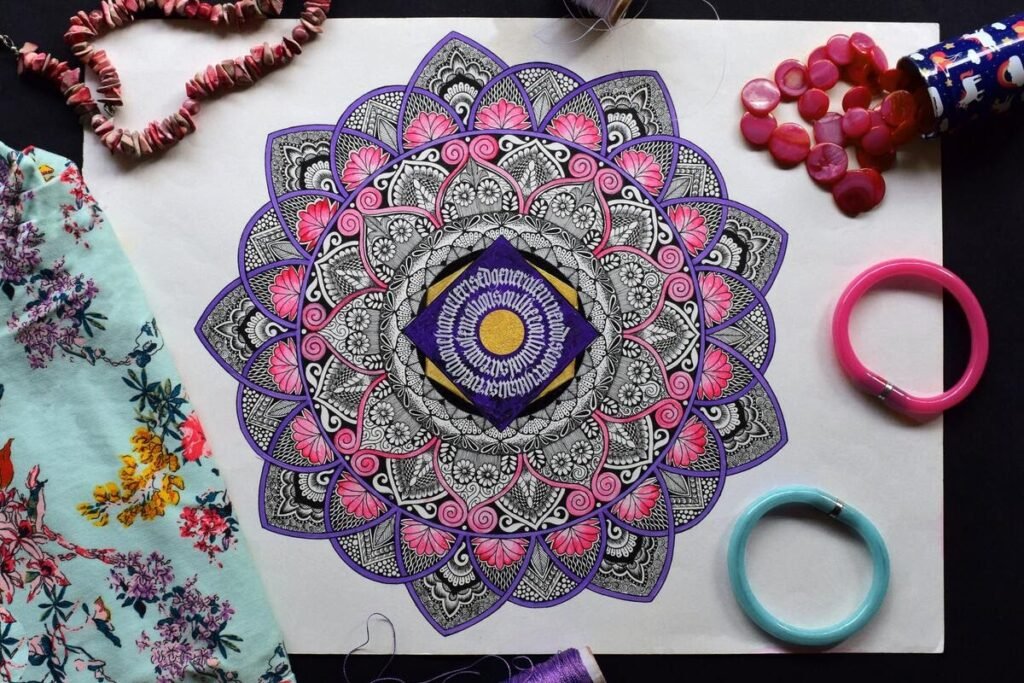Are you one of those gals who are fond of jewelry-making with your girlfriends? Friendship bracelets and necklaces are cute stuff that we loved to make when we were kids. We adorn ourselves with colorful beads to feel like princesses. The more customized the material is, the more meaningful it became. And even as grown-ups, we still fancy this hobby.
DIY Jewelry-Making: Types, Techniques, and Materials
Setting a unique and trendy style is a buzz in the fashion world today. People are up and about buying expensive jewelry to complement their elegant lifestyle. Some are even paying designers to make them customized pieces, while others look up to influencers for jewelry wearing ideas.
But did you know that jewelry wearing doesn’t necessarily have to be expensive? You can go creative and turn that jewelry-making hobby into a business. Sure, buying accessories from top brands such as Tiffany and Cartier reflects a posh lifestyle, but there are limitless possibilities to learning how to make jewelry on your own.
Scan through our jewelry-making guide below and take your creativity to the next level!
How Do I Start Making Jewelry?

Considering that jewelry-making is already your hobby, getting started would serve to level-up your artistry. But if you are entirely a newbie in this craft, don’t fret; it’s super easy and fun. Check out the steps below on starting a jewelry-making business.
Step 1: Delve into the basics.
Like any other business, the first step is to look for inspiration. You can watch YouTube videos or search for jewelry making ideas on Pinterest. Or if you have friends that are into the jewelry-making business, you can kindly ask for a few tips and ideas. Getting inspiration directly from experienced and trustworthy people is a great way to start.
After looking for ideas and inspiration, start learning the lingo. Every field has its own language, and you don’t want to get lost with important terms such as eye pin, gauge wire, and beveled edge when you start making your own jewelry.
Step 2: Choose and stock up.
Now, you have the basic idea of jewelry-making. The next step is to create your workspace and begin shopping for jewelry materials and tools. You can go thrifty through online shopping, but you may also search for affordable and quality materials in your local stores. Explore everywhere; who knows, you might bump into a huge sale online or on your local site.
Note: Before you buy the tools and materials, decide what jewelry type you would like to focus on. The possibilities for this craft might be overwhelming, but you need to choose at least one. You can begin with beaded jewelry or metal jewelry, whatever is close to your heart. The goal is to hone one skill at a time, or everything could turn into a complete mess.
Step 3: Let the craft begin.
Your journey to jewelry-making starts here. We will explain further in another section, the handmade jewellery making process and procedure. We will also reveal essential techniques and the appropriate tools and materials to be used. While we’re at it, it’s necessary to master a few basic skills, stay positive, and take risks. You can take jewelry making classes online to further hone your craft.
How much does it cost to manufacture jewelry?

We have initially discussed the jewelry-making basics and how to get started on this business. Now let’s talk about money. Start-ups can invest as low as $500, especially if you are into recycling, reusing, and repurposing. We may have mentioned above that to get started, you need to create a workspace.
But a workspace doesn’t necessarily mean that you have to put up shops and fancy stores immediately. It could be a vacant space in your home or even your garage—as long as you’re comfortable with it and you can focus on your craft.
Is it profitable to make jewelry? Yes, yes, and yes. Besides the fact that jewelry-making is a fun and creative business, it is also lucrative and therapeutic. Plus, it is totally flexible—you can do it at home any time of the day without any supervision. You can expectantly earn $15,000 to $100,000 a year, depending on your production, marketing strategies, and the quality of your jewelry pieces.
Types of Handmade Jewelry

Choosing specific jewelry for business is a critical stage of your creative journey. And we will help you decide by giving you an overview of the most common handmade jewelry classifications. Handmade jewelry has no standard look and doesn’t need mass-manufacturing machines for production. It is pretty simple and easy, and you might already be doing some of these when you were still a kid.
Beaded jewelry
Beaded handmade jewelry can either be simple or complex, depending on your design. Basically, you only need strings and beads to create bracelets and even necklaces. You can also include beads with letters or numbers for a more personalized touch. The process can become complicated if you aim for intricate designs, such as using seed beads or any piece that has small holes. But, creativity has no limit, right?
Assembled jewelry
Hand-assembled jewelry is definitely the simplest and easiest, among other types. You only need to attach a pre-made pendant, trinket, or any charms to a string or chain. The hard work mostly relies on your artistry—how you mix and match colors and designs to create personalized and unique earrings, necklaces, bracelets, and other jewelry pieces.
Fabricated jewelry
Handmade fabricated jewelry requires time and dedication to be mastered. Fabrication involves cutting out the basic shape or intricate details of a jewelry piece through the use of a metal saw. The cutout pieces will then be soldered and attached to each other to create a whole new accessory. Jewelers mostly use metal components and gemstones to fabricate the finest styles. Taking online courses and studio classes are smart ways to fully master the fabrication skill.
Wire-wrapped jewelry
Handmade wire-wrapped jewelry obviously uses a lot of wires. You may either use thick or thin wires depending on your design. Thick gauges of wire are applicable to simpler designs, while thinner gauges are appropriate for intricate woven patterns. You can also embellish other ornaments like beads and stones to your wire-wrapped jewelry to produce beautiful and more artistic pieces. Like handmade fabricated jewelry, wire-wrapping also requires time and patience to master.
Engraved or hand stamped jewelry
This type of handmade jewelry is popular among hobbyists and professionals alike. Customized designs are created by just using simple tools—stamping hammer, metal stamps, stamping block, and metal tags or blanks. The process is also pretty straightforward—you just need to hammer a metal stamp onto a metal blank.
The trick to producing authentic and attractive accessories is to look for unique stamp designs and try out different metals. You can start with aluminum or copper blanks and later move on to silver and gold pieces when you have already mastered the skill.
Thrilled with the wonderful opportunities that you can get from crafting jewelry? Let’s now tackle specific details and techniques in jewelry-making and immediately turn that hobby into a thriving business.
Jewelry Making for Beginners

So you’ve already learned the basics for jewelry-making, discovered possible outcomes and profitable gains, and now have a hint of popular handmade jewelry styles. It’s time to officially get started on the business. Below are general jewellery making ideas for beginners that you can adjust accordingly, depending on the jewelry type or style that you have chosen.
Jewelry making supplies

- Tools
- Wire cutters
- Flat-nose and round-nose pliers
- Crimping pliers
- Craft adhesive glue, E-6000 is recommended
- Ruler or tape measure
- Jewelry making kit
- Materials
- Your chosen jewelry piece (beads, stones, pendants, trinkets, or charms)
- Your chosen jewelry base (beading cord, wires, threads, wood, metal, plastics, leather)
- Memory wire and ear wires
- Beading needle (if you’re into beaded jewelry)
- Clasps and toggles
- Headpins and eye pins
While shopping for jewelry making supplies, it’s important to remember that high-quality material shall be matched with quality tools to achieve a desirable result. They don’t have to be expensive; there are a lot of affordable supplies available on the market. You just have to be keen and patient in searching.
Jewelry making techniques
There are a handful of techniques for jewelry-making. The variation may depend on several factors, such as jewelry type, materials used, and the shape and size of your pieces. We will discuss in this section easy-to-follow and straightforward jewelry making instructions to help you get better on the craft.
- Knotting technique. Knotting in jewelry plays a vital role in the aesthesis and functionality of your accessory. In doing this technique, you must determine first which cord or thread will work best for your piece. The most popular knots used in jewelry-making are overhand knot, sliding knot, and lark’s head knot. To get a more comprehensive instruction, check out basic jewelry knotting techniques here.
- Stringing technique. When it comes to jewelry stringing, nylon works very well, especially with stone bead bracelets and necklaces. Nylon doesn’t stretch or fray, so they are more durable. This technique requires a lot of patience, especially when you are working with small beads. And it is not just about putting different parts together, but combining pieces and colors to create a beautiful and distinctive design. Here’s a step-by-step guide on bead stringing for beginners.
- Loom Knitting technique. If you want to play with different jewelry patterns, you can try the loom knitting or weaving technique. The loom will serve as your guide, and your creativity will surely go a long way—from geometric patterns to intricate details and everything beyond imagination. Plus, this technique is not that tedious but more fun and exciting. Put your artistry into action through this beading loom tutorial.
Again, the above are just the basic techniques used in jewelry-making. Start practicing on those first and when you have already mastered them, explore more and let that “jewelry designer dream” in you shine through!
So, how do you make real jewelry?
It all starts with passion. Jewelry-making doesn’t necessarily have to be a childhood dream or a hobby. If you are willing to put creativity into action and consider yourself a risk-taker, then start now. Also, it doesn’t need a huge investment, yet it promises a profitable gain when done right and consistently.
Positivity and the eagerness to learn are vital ingredients to a successful jewelry-making business. Continue looking for inspiration, watch video tutorials, take online courses, and attend studio classes to get better on the craft. You can also check out our guide on “The Bling For 2020: What Kind of Jewelry is Most Popular?” to get acquainted with the latest trends.
If this article has inspired you, then set up a workspace now, go to thrift shops or add items to your cart, and let your jewelry-making journey begin.
